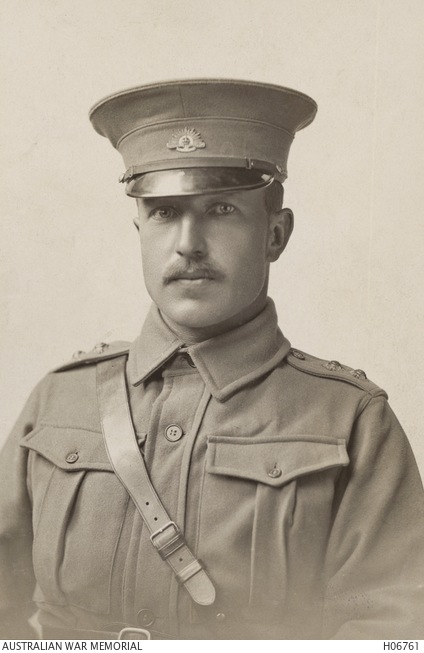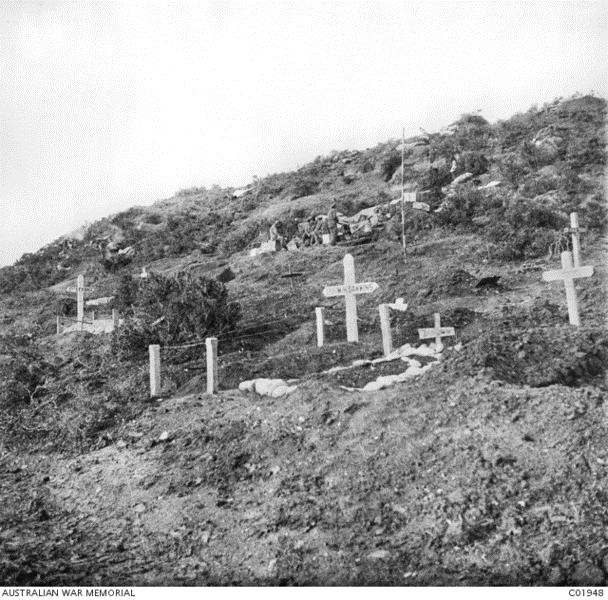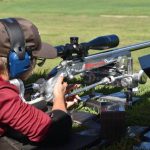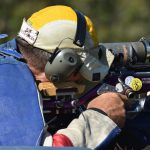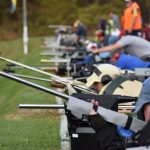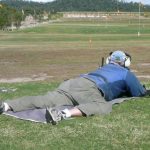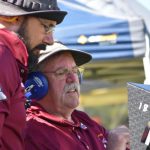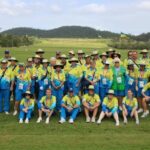‘We Remember the Sacrifice and Commitment’
ROLL OF HONOUR TRIBUTE
Edward Frederick Robert BageEdward Frederick Robert Bage
Captain Edward Frederick Robert BAGE was born on the 17 April 1888, in St Kilda, Victoria to parents, Edward and Mary Charlotte. He was the third child with two older sisters, Freda and Ethel. Their father died in 1891 when Robert (as his parents referred to him) was just 3 years old.
In 1900, Bob began his education at Melbourne Grammar School where he excelled as a student and sportsman and won the Witherby Scholarship in 1901. In 1904 he matriculated with first class honours in physics, and was awarded a Warden’s Scholarship to Trinity College, where he achieved first-class honours in chemistry and won an Exhibition in Surveying in 1905. He completed the civil engineering course in 1909, graduating with a Bachelor of Civil Engineering in 1910.
On completion of university, he secured employment with Queensland Railways as an engineer, and lived with his sister Freda in Brisbane. Bage began his military career in 1909 as Second Lieutenant in the Corps of Australian Engineers, Queensland, and was transferred to the Royal Australian Engineers, with the rank of Lieutenant, in the beginning of 1911. Initially, he joined the militia, and it was at a militia camp in 1910 that he met Field Marshal Lord Kitchener, an event that was to have a significant impact on him. He subsequently left his job with the railways and joined the small regular Army as a military engineer.
Also, while living in Brisbane, Captain Bage was a member of the Engineers Rifle Club and was well-known in rifle shooting circles. He won the “C” series aggregate at the first prize-meeting of the Metropolitan Union, at Enoggera, in 1910.
Joining Mawson on the Australiasian Antarctic Expedition
In December 1911, he obtained leave without pay from the Army, and he joined the Australasian Antarctic Expedition, under Sir Douglas Mawson, as an astronomer, assistant magnetician and recorder of tides. He had been chosen for his personal qualities, yet he undertook a crash course at the Melbourne Observatory to ensure he was technically up to date.
Mawson and his expeditionary members embarked on the Aurora on 2 December 1911 and landed in Antarctica on 3 January 1912, expecting to stay for about a year.
On 10 November 1912, Bage led the southern sledging party, which accomplished a perilous round trip of 600 miles (almost 1,000 kilometers), man-hauling their sledge over rough blizzard swept ice surfaces. The group consisting of Bage, Hurley and New Zealander Eric Webb, suffered snow blindness, emaciation, and debilitation, but gathered important magnetic, geographic and meteorological records relating to the extent of the South Magnetic Pole region.
He afterwards contributed the chapter entitled ‘The Quest of the Southern Magnetic Pole’ to Sir Douglas Mawson’s book ‘The Home of the Blizzards’. The very important scientific results of this journey took some time to work out and prepare for publication. He was awarded the Polar Medal by King George V in February 1915.
It was Bage’s “quiet determination, resolution, and foresight (that) carried them through … always cheerful, ready with a hand to anybody who needed it … he was a born leader of men”.
By 8 February 1913, Mawson’s team was four weeks overdue from their excursion and when the Aurora arrived, the expeditioners decided to leave behind Bage and several of his comrades to await the return of Mawson’s party. A day later a haggard, emaciated, and exhausted Mawson returned alone, his two comrades having perished.
The Aurora returned the following day to collect the remaining explorers but could not do so due to poor weather and once again departed. It did not return until almost a year later, on 13 December 1913. Bage and his comrades finally disembarked in Adelaide, Mawson’s hometown, on 26 February 1914. They had been away two years and three months.
According to Gordon Hayes in his 1928 survey of Antarctic research “Sir Douglas Mawson’s Expedition, judged by the magnitude of both its scale and of its achievements, was the greatest and most consummate expedition that ever sailed for Antarctica. The expedition was a magnificently conceived and executed scheme of exploration.”
Much of this was due to Bage’s southern sledging party, which, according to Mawson, “accomplished even more than anticipated”. Bage’s work on the expedition won him admiration from all his colleagues, including Sir Douglas Mawson himself and photographer Frank Hurley. Bage, Webb and Hurley still retain the record for distance covered in a day’s sledge hauling (some 800kg) and it is highly unlikely that it will ever be broken.
The outbreak of the war in Europe muted the expedition’s impact, but its scientific value emerged as the data was progressively consolidated, interpreted and published.
His Return
On his return from the Antarctic, Captain Bage resumed his military service and re-joined his Unit on 3 March 1914. He was attached to the Engineers’ Staff Office in Melbourne, and when mobilization was ordered in August 1914, he took up duty at Port Phillip Heads. When the 1st Australian Division was formed for service abroad, he volunteered for active service on 25 August 1914 as a Lieutenant, he was a member of the 3rd Field Company Engineers in Melbourne. On the 18 October 1914 he was appointed Captain, second in command of the 3rd Field Company Engineers.
He embarked on 22 September 1914 with his Unit from Melbourne on board the transport ship HMAT Geelong, aged 26 years. He then spent time in Egypt training. He was well known because of his Antarctic exploits, but it was his personal attributes and demeanour that continued to win him the respect of all those he met.
Quick Links
Our Location
Belmont Shooting Complex
- 1485 Old Cleveland Road, Belmont Qld, 4153
- PO Box 38, CARINA QLD 4152
- 07 3398 4309
- qra@qldrifle.com
- Duncan Range Standing Orders - Refer to the office
- Covid-19 Information
- GIVEITASHOT & FSC registration is via RevolutioniseSport management
ANZAC landings at Gallipoli on 25 April 1915
Bage was part of the ANZAC landings at Gallipoli on 25 April 1915. Bage and the other engineers were busy from the outset, preparing field defences, manufacturing bombs (hand grenades were not available), building roads, carting ammunition, and building gun positions for the Artillery.
Early in May 1915 some abandoned trenches were identified forward of the 11th Battalion. Major General Bridges himself inspected the area and requested that an attempt be made to push forward as soon as possible to gain the position at night. To do this, it needed to be clearly marked and for that to occur, a party needed to go forward in daylight to mark the route and extent of the trenches. Bage was nearby at the time surveying the forward area with a prismatic compass, assisted by two sappers. As he passed by, Bridges exclaimed “Here’s the man!” and Bob Bage found himself tasked for what he quickly realised was an almost suicidal mission.
Bage and a small party, had made their way forward and were in the process of driving in the marker pegs in front of the Turkish trenches near Lone Pine, when they came under attack. Captain Edward Frederick Robert Bage was killed on 7 May 1915, twelve days after the landings at Gallipoli, aged 27 years. His body could not be recovered until dark, and he was later buried in the Beach Cemetery at the southern end of Anzac Cove on the Gallipoli Peninsula. The cavalier way these men’s lives had been thrown away on a whim by Bridges caused a great deal of resentment at the time.
Bob ‘Badget’ Bage “was very popular among both officers and men, and many were the expressions of regret when the news was received at Victoria Barracks that he had fallen. He was an untiring worker, a thorough and efficient organizer, and one of the most promising of the younger officers of the permanent forces.”
Captain Bage received Special Mention in Divisional Orders on 17 July 1915 for his acts of conspicuous gallantry for his valuable services. He also received the 1914-15 Star, the British War Medal and the Victory Medal for his war service in Egypt and Gallipoli. His name is recorded on the Australian War Memorial Roll of Honour, the Melbourne Cricket Club Roll of Honour, and Melbourne Grammar School World War 1 Fallen Honour Roll.
In early 1916, Mrs Mary Charlotte Bage, Robert’s mother, donated £1000 to the School of Engineering, Melbourne University, to establish the ‘Robert Bage Memorial Scholarship’. It has been awarded annually to an engineering student or graduate for further engineering education or research. Initially winners were awarded £40.
After her death on 18 June 1931, Mary Charlotte Bage bequeathed in her Will, a further £1000 for the scholarship in her son’s name. Over the years there have been many recipients of this scholarship including Mehrdad Ahmadi in 2019 who received more than $7000 to support his PhD. The Bage Memorial Scholarship continues to be awarded annually, and applications have already closed for the 2023 award.
In over 100 years since its inception, this annual scholarship has helped many engineers, and contributed much more than the generous £2000 from Mary Bage. The Robert Bage Memorial Scholarship is an incredible legacy of an outstanding individual.
Captain Bage was a prize-winning student, athlete, explorer, rifle shooter and soldier, as well as an amazing human being who achieved so much in his life that was cut short in the Gallipoli Campaign in 1915.
We will remember him.
The QRA Roll of Honour
Rifle club members who made the supreme sacrifice. A primary purpose of the Armistice Memorial Centenary War Memorial (ACWM) is to commemorate the more than 500 Queensland riflemen who made the supreme sacrifice during WW1. The QRA Museum’s WW1 Honour Board records the names of many of these fallen soldiers. Read about the Roll of Honour and the Armistice Centenary War Memorial at the Belmont Shooting Complex.
Quick Links
About Us
The Queensland Rifle Association fosters target rifle shooting and firearms training through our clubs. Different classes of rifle shooting are conducted by our Clubs under the Standard Shooting Rules (SSRs) of the National Rifle Association of Australia (NRAA).
NRAA Quicklinks
Our Location
Belmont Shooting Complex
- 1485 Old Cleveland Road, Belmont Qld, 4153
- PO Box 38, CARINA QLD 4152
- 07 3398 4309
- qra@qldrifle.com
- Duncan Range Standing Orders - Refer to the office
- Covid-19 Information
- GIVEITASHOT & FSC registration is via RevolutioniseSport management
